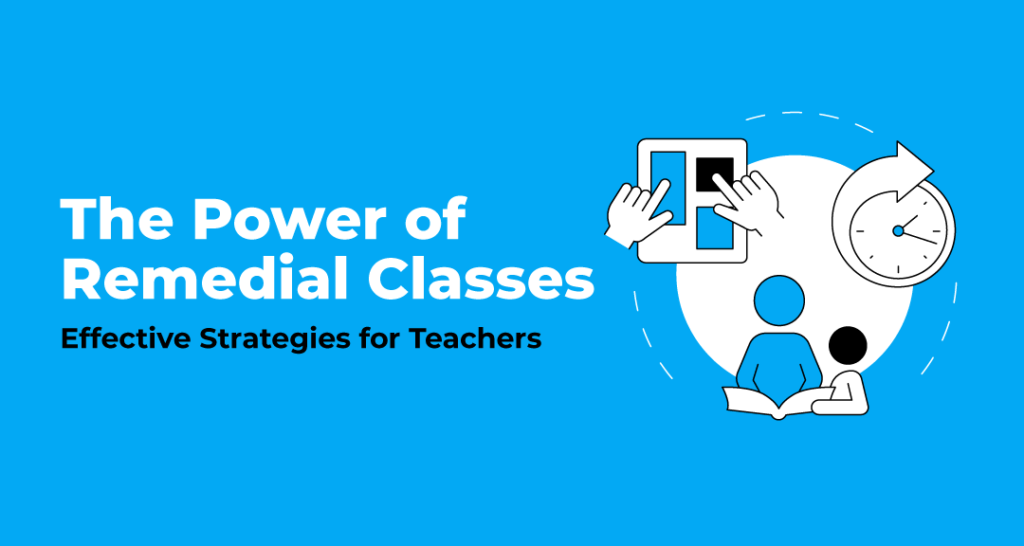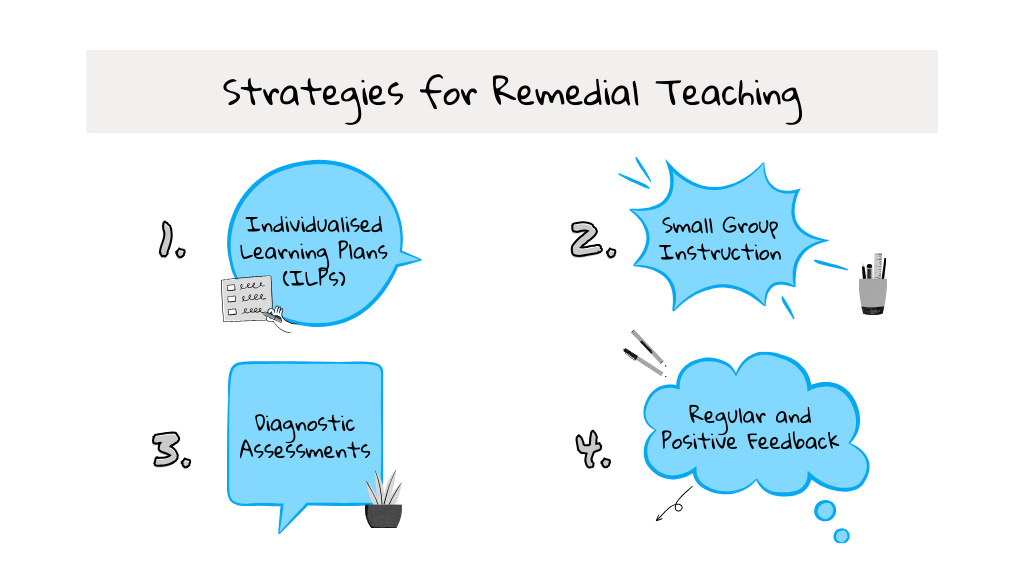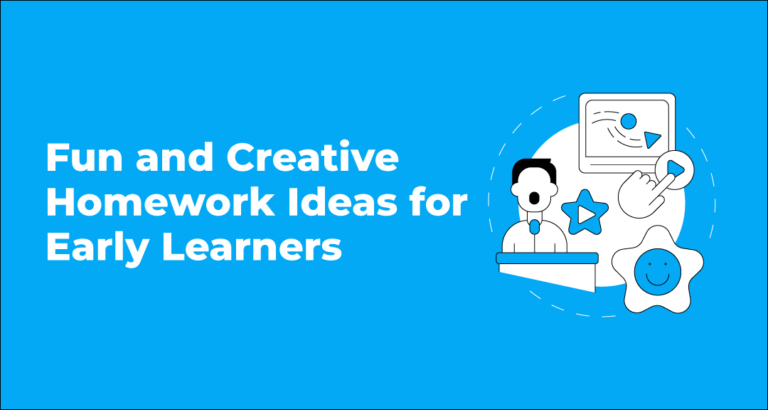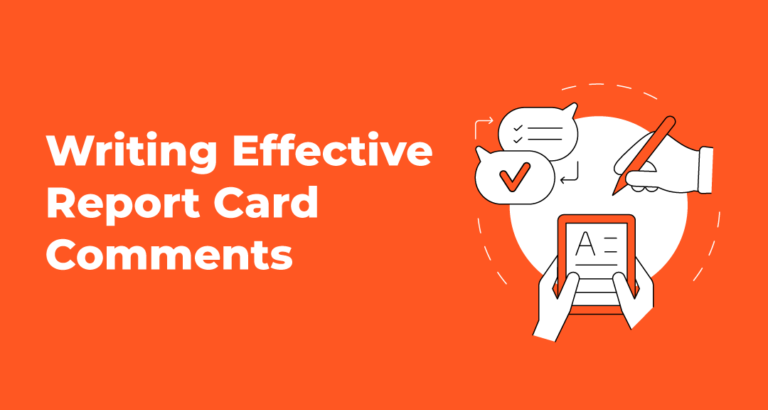The Power of Remedial Classes: Effective Strategies for Teachers
- Teaching
- September 28, 2024
- VOLT Learning

Every student is unique and born with different mental strengths. In traditional classroom settings, where “the one-size-fits-all approach” reigns supreme, their untapped potential is often neglected, and they fail to achieve their learning goals. Every child blossoms and learns differently through visual, auditory, or kinesthetic modes. Limiting them to one learning style stifles their growth and widens the students’ performance gaps.
What if we could turn this performance gap into a performance gain? Enter remedial classes—an influential approach teachers can effortlessly implement inside traditional classroom settings to bridge the widening learning gaps. The best part of remedial learning strategies is that no student feels left behind. Let’s look at what precisely remedial classes are and how teachers and learners can reap maximum benefit.
What Are Remedial Classes?
Remedial classes are touted worldwide as the ideal way to engage needy students in personalised learning. Such sessions are designed to help students overcome performance gaps in academic standards in different subjects and ensure the learners catch up with standard performance faster.
Offered as specialised educational programs, remedial classes involve one-on-one student interaction. Specific teaching practices, after-hours catch-up sessions, non-formal education, and equivalency programs provide extra responsive and flexible support after school, ensuring that students cement key problem areas that form the basis of any learning.
The main goal of remedial classes is to help students with topics they might have missed or need help understanding during regular class lessons. Remedial classes work like critical building blocks and help students close learning gaps by:
- Strengthening the performer’s base knowledge.
- Developing confidence and motivation among students.
- Stimulating and maintaining critical academic skills among students.
- Helping students progress, and not regress, into a new world of comprehension.
How to Identify Students Requiring Remedial Classes?
Observation is crucial to have first ideas for remedial teaching, but further assessment and evaluation are needed. Here are key indicators:
- Consistent Underperformance:
Students who consistently score below average or need help grasping the most straightforward ideas after classroom instructions may require extra teaching. Sometimes, their performance on class assignments, quizzes, or tests reveals areas of comprehension.
- Classroom Behavior:
Lack of engagement, negativity or contribution indicates that a student finds it challenging to cope with lessons. A student who constantly questions the procedure seems confused during lesson implementation or avoids tasks should attend remedial classes.
- Standardised Testing:
Algebra questions, benchmark tests, and other standardised tests can help determine whether a student may require more help. Such tests allow direct comparison of a student’s performance to grade-level benchmarks and even demonstrate specific areas of deficiency.
- Teacher and Parent Observations:
Every day, teachers are in contact with their students and if a teacher notices that the student is slowing down, there is a need for remedial learning. Likewise, parents may observe learning problems with homework or assignments and general learning. Regular feedback from the teachers and parents helps identify students the gaps and close the cavity created with extra coaching during remedial teaching.
Key Strategies for Remedial Teaching

Effective remedial teaching requires a tailored approach to address each student’s unique learning gaps and challenges. Here are some key strategies that can be implemented for successful remedial education:
- Individualised Learning Plans (ILPs)
Remedial instruction begins with an assessment of the learner’s learning disorders. An Individualised Learning Plan (ILP) can assist the teacher in focusing on the learning gap a specific student faces. This approach is tenable as class lessons aim to fill particular shortcomings observed in knowledge while the student gets the special attention they require.
- Small Group Instruction:
Group arrangement entails close contact with learners and thus specific evaluation of them. Since students are grouped according to their learning deficiencies, it becomes easy for the teacher to correct the problems in totality yet focus on individual students. This engulfs the entire class, enabling students to ask and contribute to the lessons without feeling embarrassed to do so in the presence of other students.
- Diagnostic Assessments:
The evaluation and diagnosis done periodically assist in checking the child’s progress and determining what aspects need to be worked on more. Such assessments are not like standard quizzes—they are diagnostic tools for determining a student’s abilities. Teachers can then change their lesson plans/teaching strategies based on the results, aiming for curriculum-based interventions.
- Regular and Positive Feedback:
Whenever the child does something correctly, he/she should be congratulated and encouraged.
Frequent feedback is crucial for students’ learning and development. Remedial teaching also needs more positive feedback than the usual classroom as it entails repeated teaching of concepts. Rewarding small achievements in behaviour addresses the motivation aspect among the students to continue with the tasks effectively.
Several techniques in teaching incorporate the use of some or all of the senses.
When students use their bodies to learn, the outcomes are much better, enhancing visual, auditory, and kinesthetic learning. Some students learn better through activities than verbal instructions, diagrams or tapes, writings, or physical movements. Teachers allow students to cover a topic through different modes and, therefore, better understand and retain content.
What are the benefits of Remedial Classes for Students and Teachers?
- Learning according to students’ needs
Remedial classes afford the students a one-on-one tuition that may not be easily provided in large classes. These strategies ensure that the various learning difficulties faced by the students are detected and complicated by custom lessons which address them. Therefore, students acquire knowledge at the individual level as an opportunity to address gaps in learning and enhance academic accomplishment.
Benefits for Teachers:
If teachers understand their student’s needs and the goal is to address the needs of a specific child, it will be easier to accomplish since the child is not competing with his peers. This will enable the teachers to focus more on areas that require it most, which will help save time and resources.
- Increased Confidence and Motivation
Unfortunately, with poor academic performance, students tend to develop poor self-esteem. Everybody gets to learn what he/she failed or did not grasp in the first instance without worrying about his/her scores affecting the group’s average. Such victories, like grasping a problematic lesson, positively impact the student, including Sunshine Coaching and Tutoring Self-Confidence and Motivation.
Benefits for Teachers:
When students are more confident, they participate more and even dominate the class discussion. The change of attitude minimises disruptive conduct and improves the learning environment, which makes teaching more satisfying.
- Closing Learning Gaps
Tutorials provide opportunities for students to review specific course content and skills fundamental to the course, which they could have done better during the initial lesson. This eradicates the risks of the outcome gap, which leads to the differentiation of knowledge as learners progress in their learning paths.
Whenever knowledge-based wisdom is conceptualised in ways that students use to practice and develop an understanding of key concepts at their own pace, it is easier for them to learn future lessons in the classroom.
Benefits for Teachers:
From the facilitators’ perspective, remedial classes entail making a less-than-adequate number of students perpetually behind. Suppose slower learners manage to close the gap. In that case, the teacher can proceed as they wish without extending the program to accommodate the few students who are still behind, which is good for the overall class environment.
- Acquiring Skills for Life Time Learning
Remedial classes teach students probable study skills and approaches to learning that they rarely get a chance to learn in class. Skills such as problem-solving, time management, and critical reasoning are essential for success in school and life. Remedial classes educate students so that they become independent learners who can handle emergent hitches on their own.
Benefits for Teachers:
For instance, through practical training, teachers can help students understand that learning is a process that needs to be followed. This is done in terms of academics and the production of responsible and self-directed learners who need less prodding in the future.
Conclusion: Are you ready for the educational transformation of classrooms
Remedial classes, therefore, come in handy because all students are included. They improve students’ and teachers’ communication, academic achievement, organisational behaviour, and performance. Nonetheless, the organisation and coordination of these sessions are not easy for teachers, mainly because they receive inadequate support.
VOLT can help out in this area. We offer a complete digital package that enables teachers to access the most advanced tools in class.
For instance, identifying the students who might need extra coaching, preparing individual development plans, and monitoring and evaluating progress frequently.
With expertly curated digital resources created to encourage active learning, teachers can prepare themselves for remedial classes and deliver efficient outcomes to their students by bringing the classroom to the next level with Viva Volt through systematic remedial teaching.



